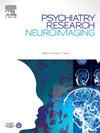MRI-based deep learning for differentiating between bipolar and major depressive disorders
IF 2.1
4区 医学
Q3 CLINICAL NEUROLOGY
引用次数: 0
Abstract
Mood disorders, particularly bipolar disorder (BD) and major depressive disorder (MDD), manifest changes in brain structure that can be detected using structural magnetic resonance imaging (MRI). Although structural MRI is a promising diagnostic tool, prevailing diagnostic criteria for BD and MDD are predominantly subjective, sometimes leading to misdiagnosis. This challenge is compounded by a limited understanding of the underlying causes of these disorders. In response, we present SE-ResNet, a Residual Network (ResNet)-based framework designed to discriminate between BD, MDD, and healthy controls (HC) using structural MRI data. Our approach extends the traditional Squeeze-and-Excitation (SE) layer by incorporating a dedicated branch for spatial attention map generation, equipped with soft-pooling, a 7 × 7 convolution, and a sigmoid function, intended to detect complex spatial patterns. The fusion of channel and spatial attention maps through element-wise addition aims to enhance the model's ability to discriminate features. Unlike conventional methods that use max-pooling for downsampling, our methodology employs soft-pooling, which aims to preserve a richer representation of input features and reduce data loss. When evaluated on a proprietary dataset comprising 303 subjects, the SE-ResNet achieved an accuracy of 85.8 %, a recall of 85.7 %, a precision of 85.9 %, and an F1 score of 85.8 %. These performance metrics suggest that the SE-ResNet framework has potential as a tool for detecting psychiatric disorders using structural MRI data.
基于磁共振成像的深度学习用于区分双相情感障碍和重度抑郁症。
情绪障碍,尤其是双相情感障碍(BD)和重度抑郁障碍(MDD),表现为大脑结构的变化,可通过结构性磁共振成像(MRI)检测到。虽然结构磁共振成像是一种很有前途的诊断工具,但目前对双相情感障碍和重度抑郁障碍的诊断标准主要是主观性的,有时会导致误诊。由于对这些疾病的根本原因了解有限,这一难题变得更加复杂。为此,我们提出了 SE-ResNet,这是一种基于残差网络(ResNet)的框架,旨在利用结构磁共振成像数据区分 BD、MDD 和健康对照(HC)。我们的方法扩展了传统的 "挤压-激发"(SE)层,加入了一个用于生成空间注意力图的专用分支,该分支配备了软池化、7 × 7 卷积和sigmoid函数,旨在检测复杂的空间模式。通过元素相加的方式融合通道和空间注意力图,旨在增强模型对特征的辨别能力。与使用最大池法进行下采样的传统方法不同,我们的方法采用了软池法,旨在保留输入特征的更丰富表征并减少数据丢失。在由 303 名受试者组成的专有数据集上进行评估时,SE-ResNet 的准确率为 85.8%,召回率为 85.7%,精确率为 85.9%,F1 分数为 85.8%。这些性能指标表明,SE-ResNet 框架具有利用结构性 MRI 数据检测精神疾病的潜力。
本文章由计算机程序翻译,如有差异,请以英文原文为准。
求助全文
约1分钟内获得全文
求助全文
来源期刊
CiteScore
3.80
自引率
0.00%
发文量
86
审稿时长
22.5 weeks
期刊介绍:
The Neuroimaging section of Psychiatry Research publishes manuscripts on positron emission tomography, magnetic resonance imaging, computerized electroencephalographic topography, regional cerebral blood flow, computed tomography, magnetoencephalography, autoradiography, post-mortem regional analyses, and other imaging techniques. Reports concerning results in psychiatric disorders, dementias, and the effects of behaviorial tasks and pharmacological treatments are featured. We also invite manuscripts on the methods of obtaining images and computer processing of the images themselves. Selected case reports are also published.

 求助内容:
求助内容: 应助结果提醒方式:
应助结果提醒方式:


